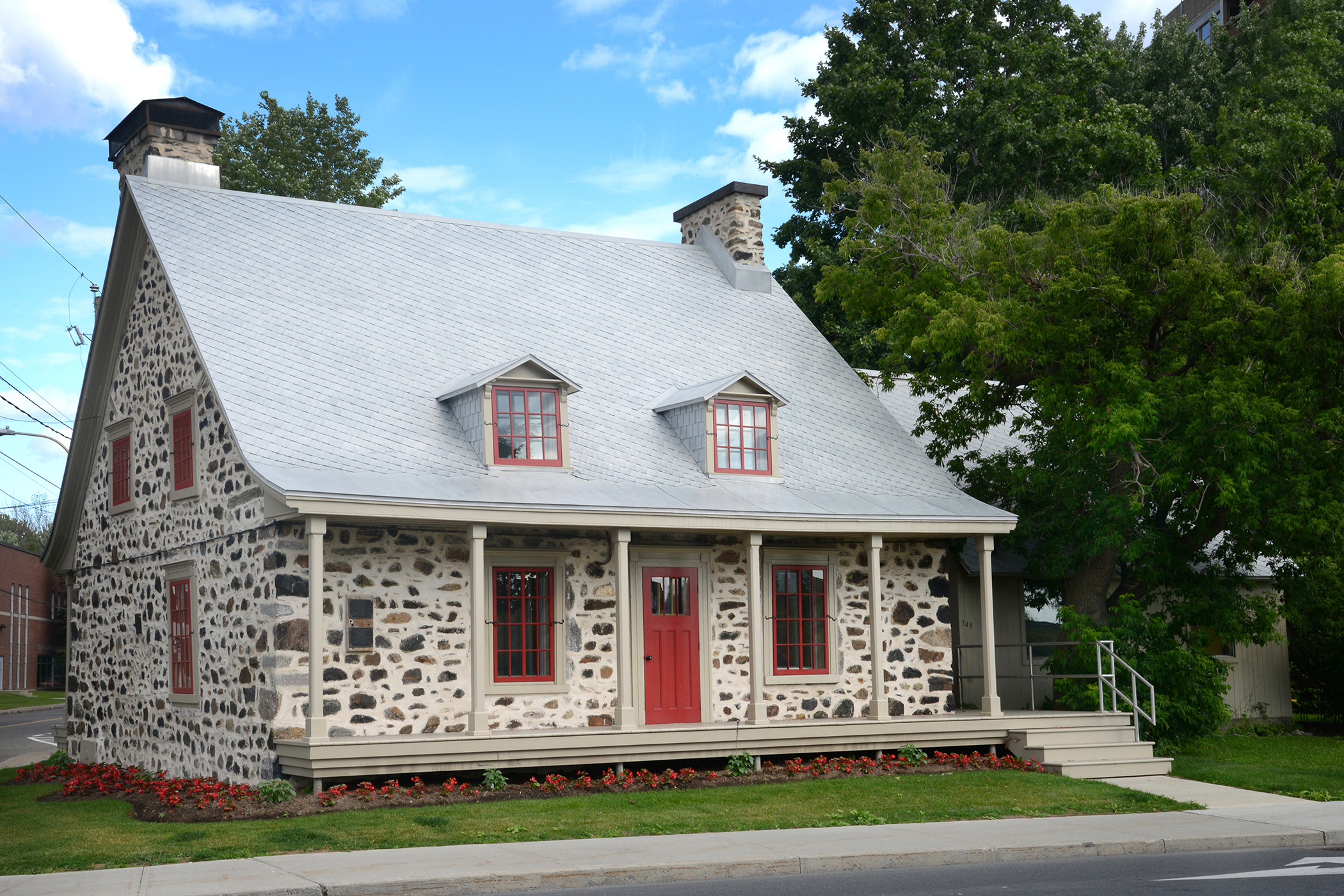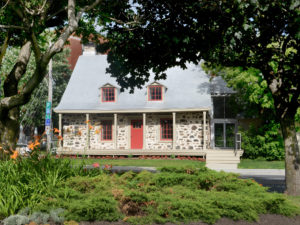Marsil House
A French heritage from our agricultural past
This fieldstone house bears witness to Saint-Lambert’s French heritage and agricultural past, while reminding us of the founding roots of Riverside Street and the Marsil family.
A strategic location
Right from the earliest days of New France’s colonization, the St. Lawrence River took on importance as the preferred means of communication. This was partly due to the fact that boat transportation was more efficient than land transportation, which was compromised by the poor quality of roads in those days. The seigneuries of La Prairie de la Magdeleine and of Longueuil, in which the current Saint-Lambert lies, derived maximum benefit from their riverside location. Roads were nonetheless important as major routes for the establishment of farms, and later, of villages. The first road on Saint-Lambert territory consisted of a public roadway running alongside the river, and would later be named Riverside.
It was along this major axis, serving as an east-west avenue of communication, that several farmhouses were erected during the 18th century. Most of the houses from that era still stand on Riverside Street today. Examples are the André-Mercille, Antoine-Ste-Marie and Marsil houses.
One of the oldest residences in Saint-Lambert
Marsil House was built around the end of the 19th century for the Sainte-Marie family. Its particular distinction is that it has not only characteristics associated with French-inspired rural houses but also characteristics associated with Québécois houses inspired by the Neoclassical style. On the one hand, it features the use of fieldstone, a main dwelling built of stone and having a virtually square plan only slightly above the ground, a one-and-a-half storey elevation, a timber-framed three-truss roof structure with purlins, stone chimney stacks arranged in staggered patterns in the gable walls, and small-paned windows, all characteristics typical of French rural houses. On the other hand, it has a bellcast gabled roof with projecting dripstones (hood moulds), a covered front verandah and gabled dormers, three elements typically associated with vernacular Québécois homes. This dual influence reflects the gradual adaptation of models and French skills to the specific conditions of the country (climate, availability of materials).
Purchased by the farmer Alexis Marcil (Mercille or Marsil) in 1826, the house remained in the Marsil family until 1935. By virtue of its history, its former occupants, its position on Riverside Street and its architecture, Marsil House stands as testimony to Saint-Lambert’s French heritage.
Marsil House, as well as the Auclair and Ste-Marie houses, are listed as heritage buildings in Quebec’s cultural heritage register.
Bibliography
- Guillet, Yves, 1980. La maison Marsil. Cahier no. 1 – December 1980. Mouillepied Historical Society, Saint-Lambert.
- Guillet, Yves, 1993. Maison Marsil : le doute persiste. Cahier no. 7 – December 1993. Mouillepied Historical Society, Saint-Lambert.
- Répertoire du patrimoine culturel du Québec, 2016. Maison Marsil. Online.
- Rémillard, François and Brian Merrett, 1990. L’architecture de Montréal – Guide des styles et des bâtiments, Éditions du Méridien.






